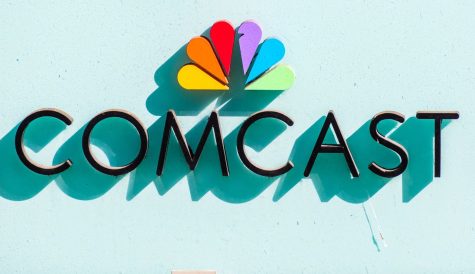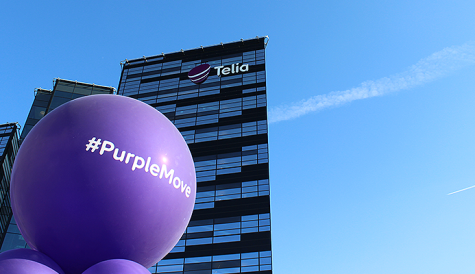Reality check – does the traditional channel model make sense?
Channel providers are adapting to the growing appeal of non-linear consumption and OTT by adapting their offerings with new ‘additive’ digital services. But for new entrants, does the traditional channel model make sense? Stuart Thomson reports.
Traditional broadcast channel providers now face the challenge of a growing range of alternative ways to consume video content, facilitated in the main by OTT providers and the internet. The question of how resilient the channel model is – with, in the case of pay TV services, the base of the dual revenue stream provided by affiliate carriage fees and advertising – has been put under the microscope as people look to the web and to OTT players to find content they are looking for.
Some of the challenges facing pay TV channel providers were discussed at the recent PEVE Entertainment Futures Business conference in London.
Taking part in a panel session at the event, Jon Sichel managing director, UK and EMEA, Scripps Networks International, said that he did not believe the channel is under immediate threat. “The world of linear channels is here to stay for the foreseeable future. What is critical is that we own our rights across platforms. We produce about 2,000 hours of content every year, predominantly in HD,” he said. Sichel said Scripps distributes content where consumers want it, including online, but that the comfort factor of families sitting around the living room watching pay TV is still viable for the foreseeable future.
On the question of whether channels should continue to be served up as part of a ‘big basic’ bundle by service providers, Sichel said that US operators had moved to offer smaller packages. However, he argued that an à la carte model doesn’t work economically and isn’t necessarily what consumers want. “Being able to rely on providers who can help me and my family choose what we want to see is so important. That will change but it won’t be just about everyone providing their own content and going direct to the consumer,” he said. “When I go to YouTube and try to find content I’m interested in I’m lost. The business of producing content is not that simple. If you move to an OTT world you have to create individual shows that you know will be a hit. If I could do that every time, I wouldn’t be here – I’d be retired. You really need an ecosystem that allows you to try out new things that are often a hit or a miss.”
Sichel said that as a channel provider that owns most of its rights, Scripps could work with platform operators to deliver on-demand content and support TV everywhere.
“We will work with operators to provide on-demand or TV everywhere on top of the linear channels. At the same time we’re platform agnostic and we are looking at OTT. But this is very different from à la carte. On-demand is additive or complementary. People still watch over four hours of TV a day. I don’t believe that an à la carte world can provide the variety and diversity of programming that we offer. It is not sustainable,” he said.
Sichel said that bundling allowed broadcasters to deliver niche channels and content that appeals to small groups.
Sichel nevertheless said that Netflix had forced operators to rethink how they develop content. “Our content has always been high value. What is important is making sure that content fits the needs of the local market. We know the future is changing. What is important is being ready whether the market demands short form or long form or whatever,” he said.
Channel providers, including Scripps, see on-demand and digital distribution as key to their future, but only as part of the existing pay TV ecosystem. Within that framework, channels are embracing OTT and new forms of digital distribution, providing a wide range of features and apps on top of their traditional linear channel model.
Luke Bradley-Jones, brand director, TV products at BSkyB, speaking at the same event as Sichel, said that linear and non-linear rights need to be coupled. If the appropriate on-demand services are not available to site alongside linear channels, the popularity of the content on those channels diminishes considerably, he said. “The visibility of content on-demand, as well as on linear channels, helps drive the popularity of that content. Without those elements, [the channel business] is a risky game to play,” he said.
Embracing digital
The degree to which channel providers look to develop digital activities can vary, but forward-thinking providers are looking to re-define the channel as part of a wider content distribution ecosystem. This is not only relevant for channels that distribute pre-recorded content, but also channels that specialise in content that traditionally has been broadcast live – including sports and news, both genres that lend themselves to alternative modes of online consumption.
For mainstream pay TV channels, digital non-linear initiatives are still seen as complementary to the main channel offering. However, they are becoming progressively more important – especially so for sports broadcasters, whose viewers have an appetite for additional information and statistics.
For pan-European sports broadcaster Eurosport, digital distribution is a key component of its content mix and also of its revenue mix.
Jean-Thierry Augustin, Eurosport’s CEO, says that digital initiatives have been central to Eurosport’s thinking for some time. He says that 2014 has been the “year of mobile” for the broadcaster, capped by its recent updating of its Android apps with new responsive design features.
Augustin points to the figures as evidence of the broadcaster’s success in driving engagement on both mobile and web platforms. Eurosport recorded an average of 8.4 million unique daily visits, including 6.3 million on the web and 2.1 million on mobile, this year. Augustin says he believes the channel will break the 10 million daily users barrier next year.
For Augustin, social recommendation is key to the appeal of digital platforms, helping drive audiences, particularly for one-off events such as the channel’s recent broadcast of German cyclist Jens Voigt’s successful attempt to beat Ondrej Sosenka’s record of the longest distance cycled in a single hour, which attracted three million viewers in primetime. The event was “massively promoted” on social networks, says Augustin, serving as a testament to the strength of social.
Augustin says Eurosport is also focused on “storytelling” in the digital domain, using digital platforms to provide background narratives related to particular competitions and events. He says Eurosport is seeking to garner rights and to create branding that will appeal to the “YouTube generation”, citing Voigt’s record attempt as a key example.
Augustin says that digital activities have to be seen as profit centres in their own right rather than simply as ways to reinforce the broadcaster’s linear channels. He says Eurosport is “doing nicely” in attracting advertising on its web and mobile properties. He says the group is also growing its OTT business, centred on the Eurosport 360 platform, which provides multiple viewpoints of major sporting events for multiple devices. The service was developed initially in partnership with Sky Deutschland and has subsequently been rolled out in a number of other territories.
Augustin says that Eurosport 360 is a “complementary offer” to the main channel offering and Eurosport does not intend to offer it as a direct-to-consumer proposition. “Our priority is business-to-business and business-to-consumer is just to test new ideas after which we immediately transfer them to the B2B business,” he says.
News channels
News is another major category of content where real-time distribution is key. For Arnaud Verlhac, global distribution director at Euronews, news channels in particular are “in the middle of the storm” as news consumption migrates rapidly to digital platforms. Digital innovation has not only created new online and mobile platforms for news distribution such as Buzzfeed and Flipboard but has also changed the nature of newsgathering and reporting itself.
“All of that pushes us forward to keep on innovating to bring the right content to the right place. We need to renew our model and to have a clear vision of where we are going,” says Verlhac, who identifies mobile distribution as a key priority for the broadcaster.
“We are always looking to get new opportunities and what we’ve experienced in the past two years is that the key opportunities are around mobile distribution and content syndication,” he says. “For us, digital distribution is really about mobile distribution and working with content aggregators to get to a new audience.”
Mobile is seen as important because it enables Euronews to reach a new audience as well as serving as a complement to its existing broadcast channel, with its ability to reach a relatively high-end audience prized by advertisers. Mobile on the other hand enables the news channel to reach a much broader base in emerging markets such as Latin America and Africa.
“Broadcast gives us the chance to expand our global audience reach, but we know what kind of audience we are reaching with it. Digital on the other hand gives us the chance to reach new users and increase the exposure of the brand. It also increases our advertising inventory,” he says. In emerging markets in particular, the pay TV platforms where Euronews is present, such as Cablevision in Mexico or DStv in South Africa, reach a relatively well-off audience.
With mobile, the channel can provide a range of apps targeted at different use cases that are also viewable, for example, on feature phones as well as smartphones. Euronews provides three categories of experience on mobile: a text plus pictures service, complemented with push notifications, known as Euronews Express, that is viewable on most devices; an on-demand app; and the live channel.
Digital distribution has major implications for Euronews. Internally, Verlhac says the broadcaster is still working out the implications for best editorial practice and how far to integrate or keep separate broadcast and digital teams. In terms of content, the channel has branched out from providing breaking news to delivering a wider range of factual content, for example by launching the Euronews Knowledge channel on YouTube.
Commercially, this means a business model based primarily on advertising and revenue share rather than affiliate carriage fees, and it also has implications for the way the channel functions editorially.
With regards to digital distribution generally, Verlhac says that the business model works in a similar way across mobile, smart TV and for content syndication. These are seen as key opportunities to grow the business, as revenues from the traditional broadcast business faces the prospect of long term decline, particularly as news is not seen by platform operators as a driver to grow their subscriber base. Verlhac is nevertheless optimistic that the digital side of the business will not cannibalise the traditional broadcast business, at least for the foreseeable future. The key to the channel’s future is to continue to innovate. “The worst thing to do for the future would be not to act,” he says.
New entrants
Eurosport and Euronews are established channels that are looking to evolve with the needs of consumers. But for new entrants, does the channel concept still make sense?
Providers that have looked to embrace new digital distribution opportunities wholeheartedly including Swiss channel provider Joiz, which provides a channel focusing on live entertainment and news content aimed initially at the German-speaking population of Switzerland. Joiz has put the second screen experience and social interaction at the centre of its activities, with a view to using this to make additional revenue from e-commerce and other activities.
According to Alexander Mazzara, CEO of Joiz, data is key to its view of the future of the channel. The channel encourages viewers to register and to provide additional personal data for a reward – for example in the form of loyalty points that can be redeemed for goods and services.
“We knew in first phase that we had to make barriers to registration low, so just email and name or registration via Facebook, but the data that provides is very weak,” says Mazzara. “People don’t want to give too much away, but the more you engage with them and offer loyalty points for interaction the more they provide. If they want to redeem those loyalty points against products or tickets or whatever, we need their real addresses, mobile phone numbers and names.”
Joiz interacts with its viewers in a number of ways, including via a software-based ‘red button’ service that works a little like Shazam. Interacting using the Joiz red button during a spot from McDonald’s provided viewers with vouchers for a menu discount as part of their McDonald’s meal. Mazzara says this establishes a connection between client and TV viewer while also providing a rich source of data that can be of immense value to marketers. Joiz can send tailored messages promoting certain events and products to its registered base of viewers based on previous consumption patterns.
For Mazzara, interactive advertising works. He cites the example of a red button ad campaign for Mini Cooper cars across German-speaking Switzerland by Joiz which provided 4,200 requests for test drives, exceeding the client’s expectations. “It’s not a question of reach but of how many people you can convert,” says Mazzara.
Mazzara also believes in the value of the second screen, something that has been questioned by a number of industry participants in recent times. Joiz has created its own social network to engage viewers around programming. “As the TV industry, we have the huge advantage of content and we can create communities around that,” he says, although Joiz also uses Facebook, Instagram and WhatsApp to interact with its viewers.
Mazzara says Joiz focuses primarily on live content, which is most likely to engender social interaction on the part of its viewer base, including before and after the show airs. It does however also air pre-recorded reality shows such as Flirt Kitchen, featuring singles cooking at home, and enables second-screen interaction with the stars of the show. “Even if something is pre-produced you can have a live presence on the second screen that makes the show almost live,” says Mazzara.
Joiz has now begun licensing its technology platform to third-party channel providers, and Mazzara says the company is seeing strong interest in this.
On-demand route
While Joiz, with its emphasis on social TV and the second screen, is a channel focusing on live content, other new video distribution ventures have more recently focused on OTT and video-on-demand. While much attention has been focused on VoD aggregators such as Netflix, Amazon and others, some niche content providers are looking to on-demand rather than the linear channel as the most promising foundation of a viable business. One new venture, Cennarium, backed by Brazilian construction giant Grupo Fernandes Araujo, plans to launch an international VoD channel aimed at bringing live theatrical, opera and ballet performance to a wider international audience.
Gulu Monteiro, founder of Cennarium, says that the service’s raison d’être is to “bring [theatrical performances] to people who will never have the opportunity to watch these great shows that appear only in the world’s cultural capitals”. Cennarium has agreements in place in eight countries with major institutions and performing arts companies to film live performances and make them available, whole and unabridged, to a wider global public. Cennarium has based its model on subscription transactional VoD and revenue sharing with the companies whose performances it films.
Cennarium has been available on a beta trial basis in Brazil for some time and its international launch is scheduled for November.
Monteiro says that Cennarium will subtitle its content for each territory in which it is present and will complement its coverage of live performances with additional material such as interviews with artists and directors and videos of the backstage build-up to performances.
In addition to showing the content it produces on its own platform, Cennarium is also selling rights on to third party broadcasters and content distributors – it is present at MIPCOM for the first time this year.
Cennarium is looking to partner up with cable and IPTV operators where possible, either to distribute its own branded service via their platforms or to sell its content to their own VoD service – as it already has in Brazil.
According to Monteiro, the company is still experimenting and working out which business models work best, between for example subscription and transactional VoD and exclusive or non-exclusive content sales. He is decisive, however, when it comes to the question of whether or not Cennarium should launch a linear channel, explaining that the long-form content does not lend itself to this but is, rather, more suitable for non-linear on-demand consumption, as is the revenue-share relationship it has with its production partners.
“It is difficult to exploit our content in this format because performances can last three hours,” says Monteiro. “Another thing that we are also seeing is that the producers [of performances] prefer our VoD streaming model as it enables them to be more on top of auditing the share of revenue that they get. So for now linear TV is not for us. That doesn’t mean we’ve ruled it out if negotiations allow for it, but our main focus is digital platforms.”
Cennarium highlights one of the key choices facing new entrants with niche content offerings – whether to go down the traditional channel route or to opt for a purely on-demand, OTT offering to maximise its reach. While the traditional channel model clearly has some way to run, and can extend its life expectancy by adapting with complementary digital services, new entrants to the content business are increasingly less likely to follow that well-trodden route.




